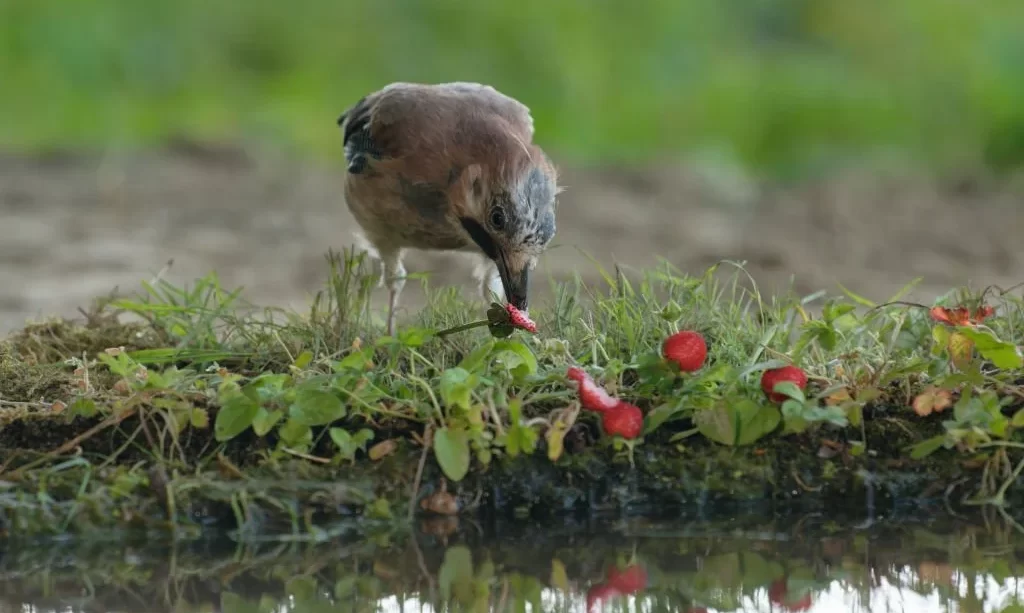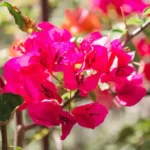The strawberry, with its luscious red hue, sweet fragrance, and irresistible juiciness, stands as a universal symbol of summer’s bounty. Cultivated and cherished for centuries, this delectable fruit has secured a permanent place in our gardens, hearts, and palates. But as we tend to our strawberry patches and savor the joys of picking plump, sun-ripened berries, a question often arises: Do our feathered friends in the avian world share our passion for strawberries, or do these vibrant fruits escape the scrutiny of beaks and the flutter of wings?
The Allure of Strawberries
Strawberries, with their innate charm, captivate the senses and evoke a sense of nostalgia for warm, sunny days. These ruby-red jewels of the garden tantalize taste buds with a perfect balance of sweetness and tartness, making them a beloved fruit for humans of all ages. Whether nestled in a bowl of fresh cream, adorning a slice of shortcake, or simply enjoyed straight from the vine, strawberries are a quintessential delight of the summer season.
Their appeal extends beyond flavor. The visual allure of strawberries is undeniable, as their brilliant red hue gleams against a backdrop of lush green foliage. Their sweet aroma hangs in the air, beckoning pollinators and, as we’ll explore, the occasional avian visitor. Strawberries are not just a fruit; they are an embodiment of summertime’s vibrancy, a testament to nature’s capacity for creating edible treasures. Yet, in this relationship between strawberries and humans, lies the intrigue of whether these delightful fruits find a place in the dietary preferences of our feathered companions.
Birds and Their Dietary Habits
To understand whether birds indulge in the delightful world of strawberries, it’s essential to explore the dietary habits of our feathered friends. Birds, known for their remarkable diversity in both species and dietary preferences, have earned their place as opportunistic feeders in the natural world. They have evolved to take advantage of a wide range of food sources, adapting their diets to what’s available within their habitats.
From seeds to insects, berries to nectar, birds exhibit a remarkable spectrum of food choices. Some species are primarily granivorous, relying on seeds and grains for sustenance. Others are insectivorous, hunting down insects and spiders with precision. Fruits, including berries like strawberries, feature prominently in the diets of many bird species, particularly during the fruiting season.
Do Birds Eat Strawberries?
Now, the captivating question at hand: Do our feathered companions indeed have a penchant for strawberries? The answer is a nuanced one. While birds are not universally drawn to strawberries, there are instances where these delectable fruits do pique their interest.
Certain bird species, such as the American Robin (Turdus migratorius) and European Starling (Sturnus vulgaris), have been observed nibbling on strawberries. Robins, known for their love of fruit, often forage for strawberries in gardens, plucking the ripest specimens for a quick, juicy meal. Starlings, with their adaptability and varied diet, may also indulge in strawberries when the opportunity arises.
However, it’s essential to note that not all birds are equally inclined to partake in this fruity feast. Bird preferences can vary based on factors like species, local food availability, and individual taste. Some birds may show little interest in strawberries, while others may be regular visitors to strawberry patches.
So, while strawberries may not be universally irresistible to all avian visitors, they undoubtedly hold a place in the eclectic menu of nature’s feathered foragers. Understanding the nuances of this relationship between birds and strawberries can help us appreciate the diverse dietary habits of our avian neighbors and better manage our gardens accordingly.
- Hardiest Everbearer You Can Grow
- Huge crops of bright red berries bursting with juice
- Hardy in zones 3-7
- Honey-sweet flavor is excellent fresh and for processing
- Garden & Patio
Factors That Attract Birds to Strawberries
Several factors contribute to the allure of strawberries for birds:
- Color and Aroma: The vibrant red color of ripe strawberries and their sweet aroma can catch the attention of birds, particularly those with a penchant for fruit.
- Ripeness: Birds often seek out the ripest fruits, as they are more flavorful and easier to eat.
- Abundance: If strawberries are abundant in an area, birds may be more inclined to explore and forage for them.
- Variety: Different bird species have varying dietary preferences. Some, like robins, are known fruit lovers, while others may favor insects or seeds.
Protecting Strawberries from Birds
Gardeners and farmers often employ various strategies to safeguard their strawberry crops from avian feasting:
- Netting: Covering strawberry plants with bird netting is an effective method to physically deter birds from accessing the fruits.
- Scare Tactics: Using scarecrows, reflective objects, or motion-activated devices can startle birds and discourage them from approaching strawberry patches.
- Companion Planting: Planting companion crops or flowers that birds find unappealing near strawberries can help deter them.
- Harvesting Promptly: Harvesting ripe strawberries promptly reduces the likelihood of birds finding them as a food source.
- 【Ultra-Fine Mesh Netting】Large Size 10×33 Feet provide more security, Ultra Fine Garden Netting has a 0.8mm x 1mm ultra-fine mesh, effective protect vegetable plants fruits flowers crops.
- 【Air, Water & Light Through】Unique oblong hole construction creates very fine protections for great results, and others while allowing air and moisture through. Even better, there is no need to remove it when watering or giving a liquid feed, just apply directly through the mesh.
- 【All-Purpose Garden Netting】Garden netting covers are widely used in pastures, orchards and gardens, protect your veggie investment with this simple shelter, also used indoors and windows at home. Its fine mesh keeps tree leaves out even the smallest dust — but provides some respite from the intense sun too.
- 【Stabilized & Durable】The garden netting is made of high-quality see-through mesh netting with PE stabilized. Durable for long time use and can be reused year after year.
- 【Protect Plants Easily】Easy to use-You can put the netting covers over plants directly and then secure with stones, soil, or stakes, and it can be cut into any size as needed. Protect your plants, trees and shrubs such as peaches, cherries, grapes, tomato, etc.
Conclusion
In the intricate dance between birds and strawberries, the answer to whether birds eat these delectable fruits lies in the middle ground. While not all bird species are equally drawn to strawberries, some, like robins and starlings, do indeed partake in this fruity delight. The vivid color, enticing aroma, and ripeness of strawberries make them an occasional addition to the avian menu.
For gardeners and fruit enthusiasts, understanding the factors that attract birds to strawberries can be instrumental in protecting their cherished harvests. By employing protective measures such as netting and scare tactics, we can strike a balance that allows us to enjoy the bounty of strawberries while respecting the diverse dietary preferences of our feathered neighbors. In the end, the coexistence of birds and strawberries in our gardens adds an extra layer of enchantment to the natural world, where every creature finds its place in the intricate web of life.







